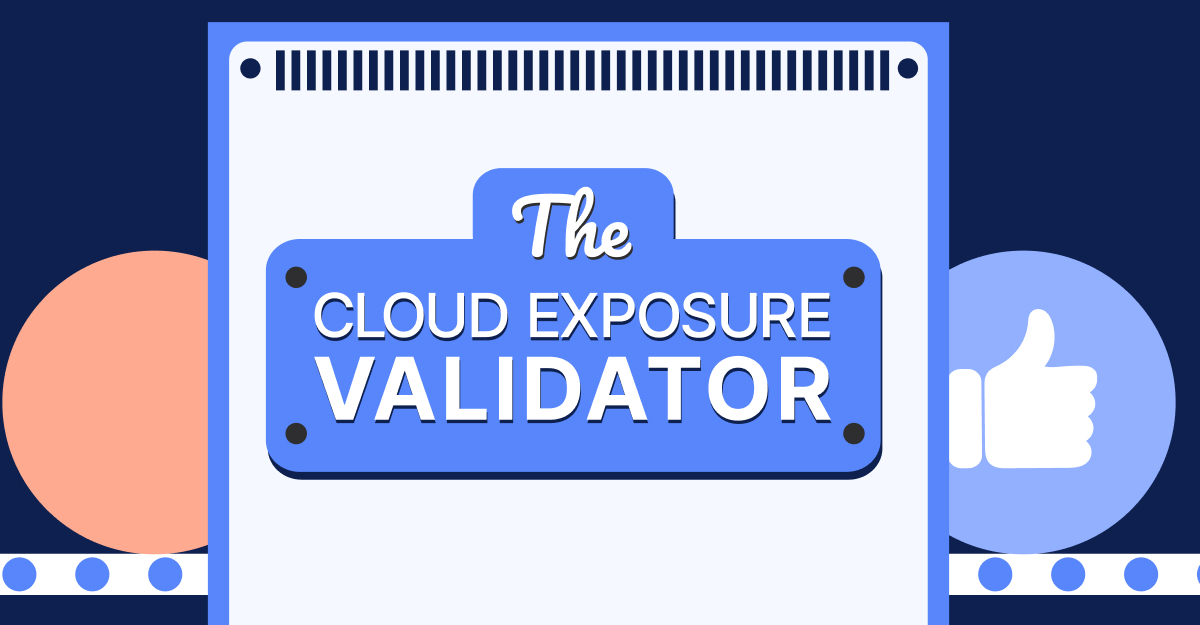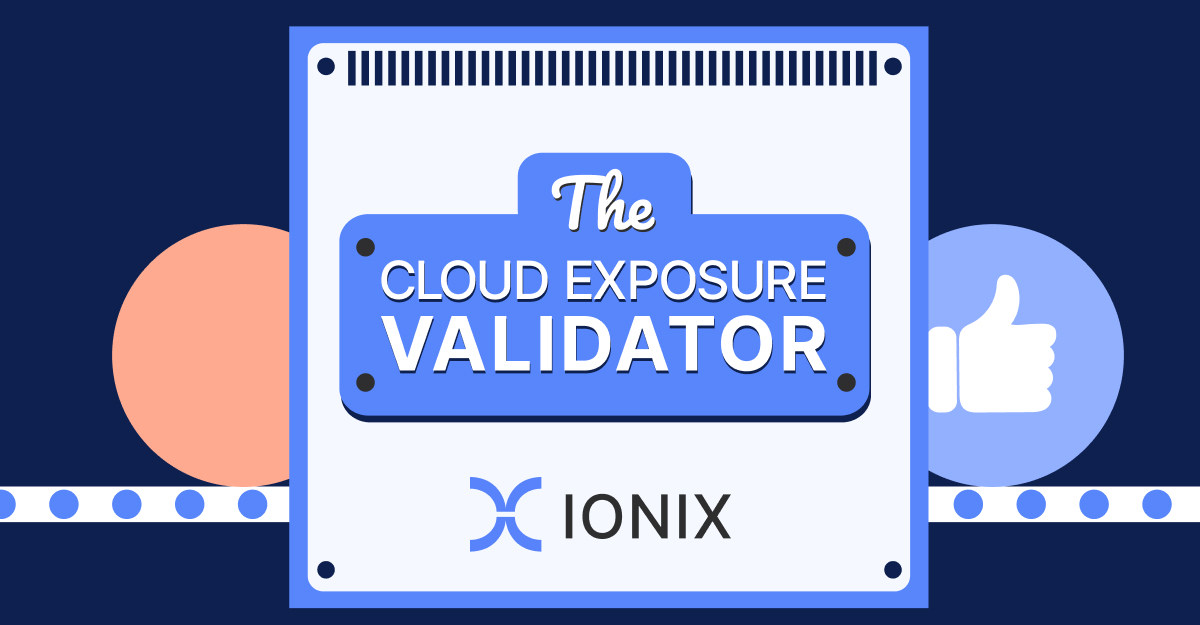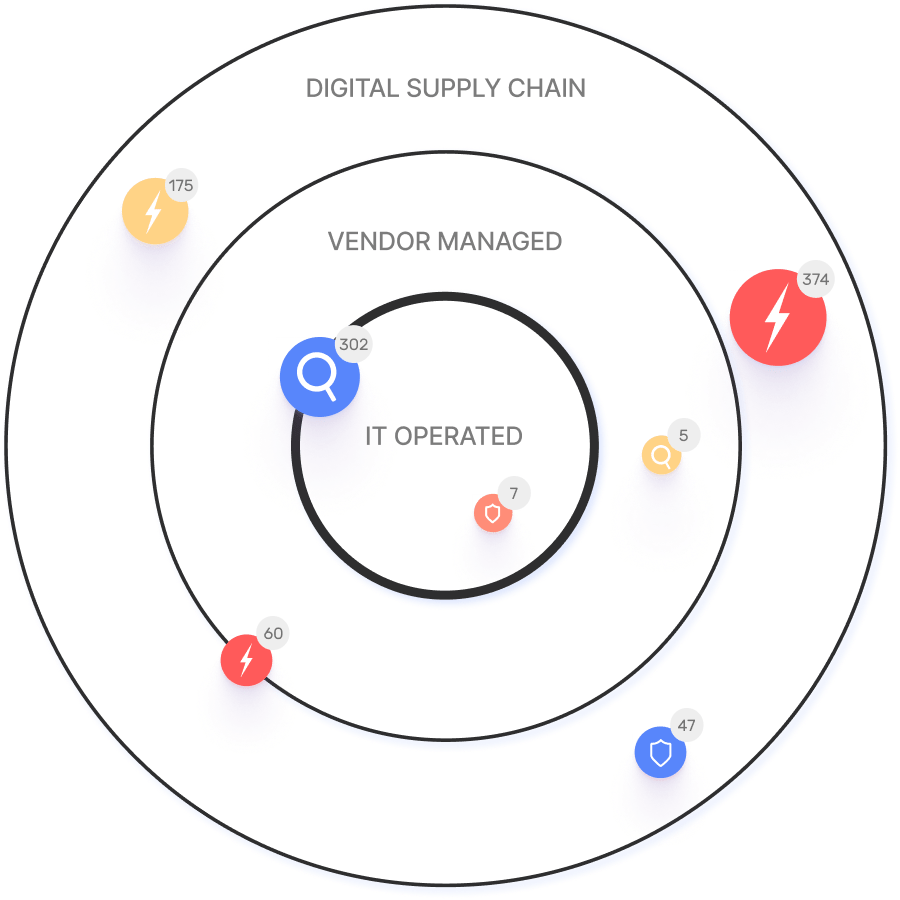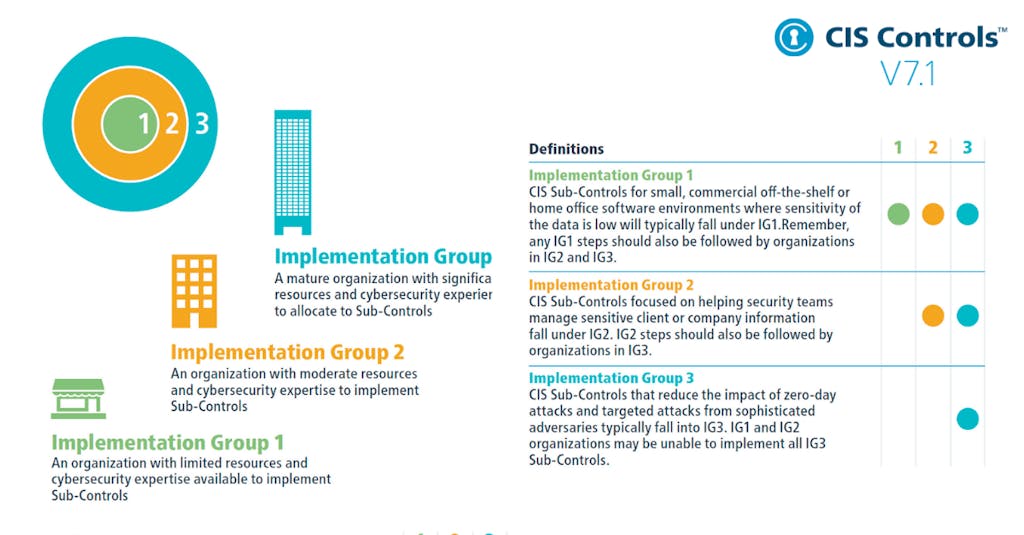Frequently Asked Questions
Features & Capabilities
What is CIS Control 7 and why is it important?
CIS Control 7 focuses on continuous vulnerability management. It involves developing a process to continuously find and track vulnerabilities in all enterprise assets, remediating and minimizing the risk of exploitation. This control is crucial because attackers constantly scan external infrastructure for unpatched weak points, making timely vulnerability identification and remediation essential for security. Learn more.
What are the seven safeguards of CIS Control 7?
The seven safeguards of CIS Control 7 are:
- Safeguard 7.1: Establish and Maintain a Vulnerability Management Process (Govern, IG1)
- Safeguard 7.2: Establish and Maintain a Remediation Process (Govern, IG1)
- Safeguard 7.3: Perform Automated Operating System Patch Management (Protect, IG1)
- Safeguard 7.4: Perform Automated Application Patch Management (Protect, IG1)
- Safeguard 7.5: Perform Automated Vulnerability Scans of Internal Enterprise Assets (Identify, IG2)
- Safeguard 7.6: Perform Automated Vulnerability Scans of Externally-Exposed Enterprise Assets (Identify, IG2)
- Safeguard 7.7: Remediate Detected Vulnerabilities (Respond, IG2)
Each safeguard is associated with a NIST CSF Function and a starting Implementation Group. See full details.
What are Implementation Groups (IGs) in the CIS Controls framework?
Implementation Groups (IGs) are self-assessed categories for organizations based on cybersecurity attributes. They represent levels of increasing security requirements: IG1 is the most basic, IG2 is intermediate, and IG3 is the most advanced. Higher-level groups include the requirements of lower ones. For example, any IG1 safeguard must also be implemented in IG2 and IG3. Learn more.
How does IONIX help organizations with continuous vulnerability management?
IONIX provides a cybersecurity platform that enables organizations to continuously discover and track vulnerabilities across all internet-facing assets. Its features include Attack Surface Discovery, Risk Assessment, Risk Prioritization, and Risk Remediation. IONIX helps organizations maintain an up-to-date inventory, monitor for new vulnerabilities, and streamline remediation workflows to minimize risk and reduce mean time to resolution (MTTR). Learn more about the platform.
What are the key features of the IONIX platform?
The IONIX platform offers:
- Attack Surface Discovery
- Risk Assessment
- Risk Prioritization
- Risk Remediation
- Threat Exposure Radar
- Comprehensive digital supply chain mapping
- Streamlined remediation workflows
- Integrations with tools like Jira, ServiceNow, Splunk, Microsoft Sentinel, Palo Alto Cortex/Demisto, AWS services, and more (see full list)
These features help organizations discover all relevant assets, monitor changes, and remediate vulnerabilities efficiently.
Does IONIX support integration with other security and IT tools?
Yes, IONIX integrates with a wide range of security and IT tools, including Jira, ServiceNow, Slack, Splunk, Microsoft Sentinel, Palo Alto Cortex/Demisto, AWS Control Tower, AWS PrivateLink, and pre-trained Amazon SageMaker Models. These integrations enable seamless workflows and data sharing across your security ecosystem. See all integrations.
Does IONIX offer an API for custom integrations?
Yes, IONIX provides an API that supports integrations with major platforms such as Jira, ServiceNow, Splunk, Cortex XSOAR, and more. This allows organizations to automate workflows and connect IONIX with their existing security infrastructure. Learn more about the API.
Use Cases & Benefits
Who can benefit from using IONIX?
IONIX is designed for Information Security and Cybersecurity VPs, C-level executives, IT managers, and security managers across industries such as insurance, financial services, energy, critical infrastructure, IT and technology, and healthcare. It is suitable for organizations of all sizes, including Fortune 500 companies. See customer stories.
What business impact can customers expect from using IONIX?
Customers can expect improved risk management, operational efficiency, cost savings, and enhanced security posture. IONIX enables visualization and prioritization of attack surface threats, actionable insights, reduced mean time to resolution (MTTR), and optimized resource allocation. For more details, visit this page.
What problems does IONIX solve for its customers?
IONIX addresses several key pain points:
- Complete External Web Footprint: Identifies shadow IT and unauthorized projects, ensuring no external assets are overlooked.
- Proactive Security Management: Enables early threat identification and mitigation before escalation.
- Real Attack Surface Visibility: Provides attacker-perspective visibility for better risk prioritization.
- Continuous Discovery and Inventory: Maintains up-to-date asset inventory in dynamic IT environments.
These solutions help organizations prevent breaches and improve overall security management.
Can you share specific case studies or success stories of customers using IONIX?
Yes, IONIX has several published case studies:
- E.ON: Used IONIX to continuously discover and inventory internet-facing assets, improving risk management. Read more.
- Warner Music Group: Boosted operational efficiency and aligned security operations with business goals. Learn more.
- Grand Canyon Education: Enhanced security by proactively discovering and remediating vulnerabilities. Details.
Technical Requirements & Implementation
How long does it take to implement IONIX and how easy is it to start?
Getting started with IONIX is simple and efficient. Initial deployment typically takes about a week and requires only one person to implement and scan the entire network. Customers have access to onboarding resources such as guides, tutorials, webinars, and a dedicated Technical Support Team. Learn more.
What training and technical support is available for new IONIX customers?
IONIX offers streamlined onboarding resources, including guides, tutorials, webinars, and a dedicated Technical Support Team to assist customers during implementation and adoption. For more details, visit this page.
What kind of ongoing support and maintenance does IONIX provide?
IONIX provides technical support and maintenance services during the subscription term, including troubleshooting, upgrades, and maintenance. Customers are assigned a dedicated account manager and benefit from regular review meetings to address issues and ensure smooth operation. See terms.
Security & Compliance
What security and compliance certifications does IONIX have?
IONIX is SOC2 compliant and supports companies with their NIS-2 and DORA compliance, ensuring robust security measures and regulatory alignment.
How does IONIX ensure product security and compliance?
IONIX implements robust security measures and maintains SOC2 compliance. It also supports organizations in meeting NIS-2 and DORA regulatory requirements, helping them align with industry standards and best practices.
Customer Proof & Recognition
Who are some of IONIX's customers?
IONIX's customers include Infosys, Warner Music Group, The Telegraph, E.ON, Grand Canyon Education, and a Fortune 500 Insurance Company. See more.
What feedback have customers given about IONIX's ease of use?
Customers have rated IONIX as user-friendly and appreciate having a dedicated account manager for smooth communication and support.
Has IONIX received any industry recognition or awards?
Yes, IONIX was named a leader in the Innovation and Product categories of the ASM Leadership Compass for completeness of product vision and a customer-oriented, cutting-edge approach to ASM. It also won the Winter 2023 Digital Innovator Award from Intellyx. See details.
Guides & Resources
Where can I find guides and resources from IONIX?
IONIX provides comprehensive guides, datasheets, and case studies on its resources page. Visit IONIX Resources and Guides for more information.
What is the purpose of the IONIX Guides section?
The IONIX Guides section offers resources and insights into cybersecurity topics, tools, and frameworks. Guides cover Automated Security Control Assessment (ASCA), web application security, exposure management, vulnerability assessments, the OWASP Top 10, CIS Controls, and attack surface management. Each guide includes detailed articles, methodologies, and actionable advice. Explore guides.
Where can I learn more about the 18 CIS Controls?
IONIX provides detailed guides and explanations for each of the 18 CIS Controls. Visit this page for comprehensive coverage.
What is CIS Control 7 about?
CIS Control 7 is about continuous vulnerability management. It involves developing a process to continuously find and track vulnerabilities in all enterprise assets to remediate and minimize the risk of exploitation. Read more.
Where can I find the CIS Control 7 Explained guide?
The CIS Control 7 Explained guide is available at this link.



